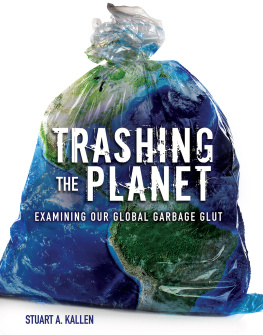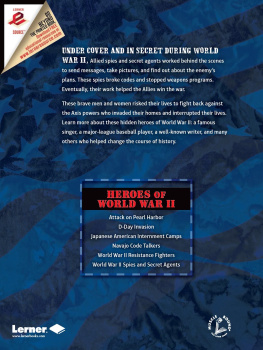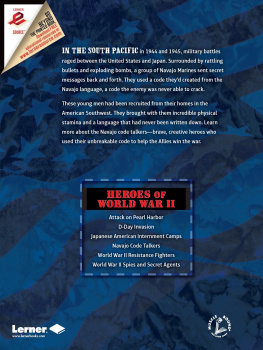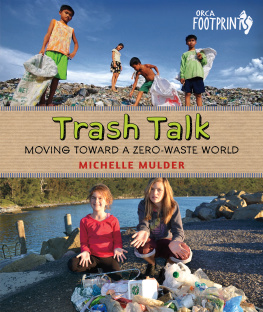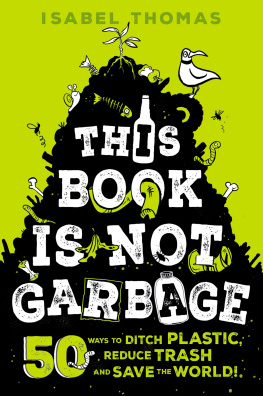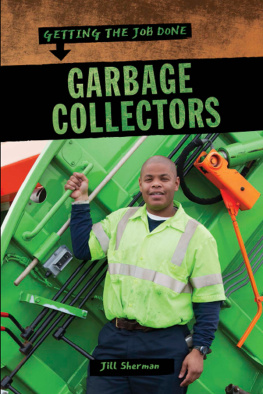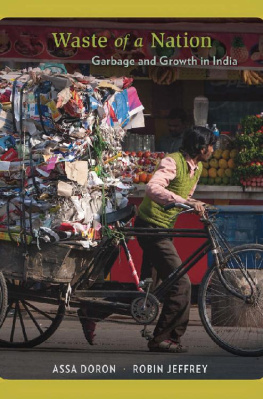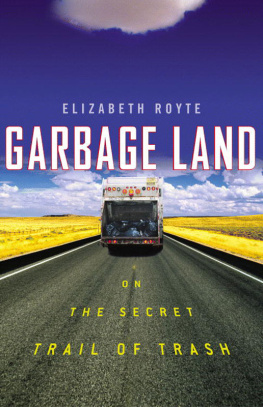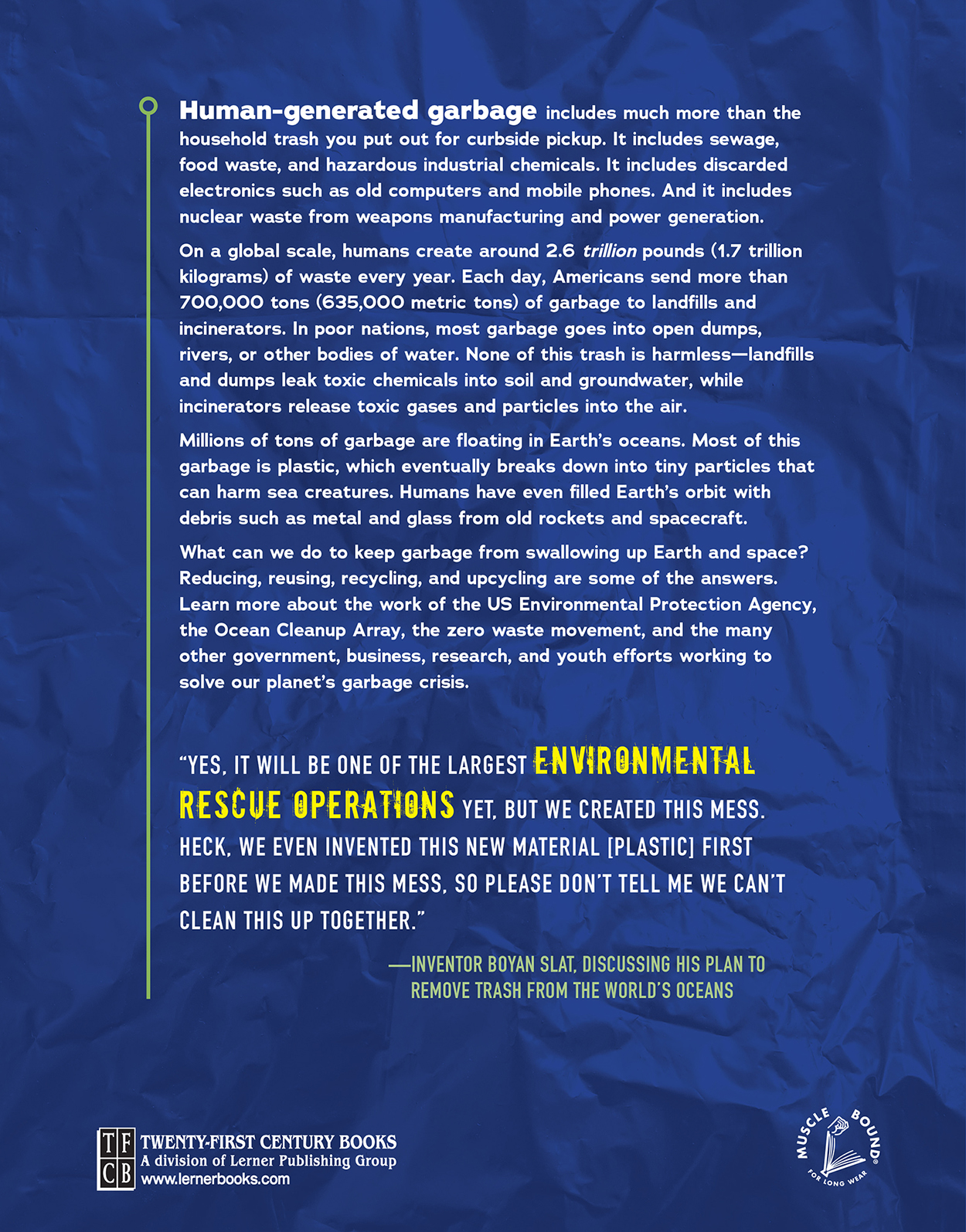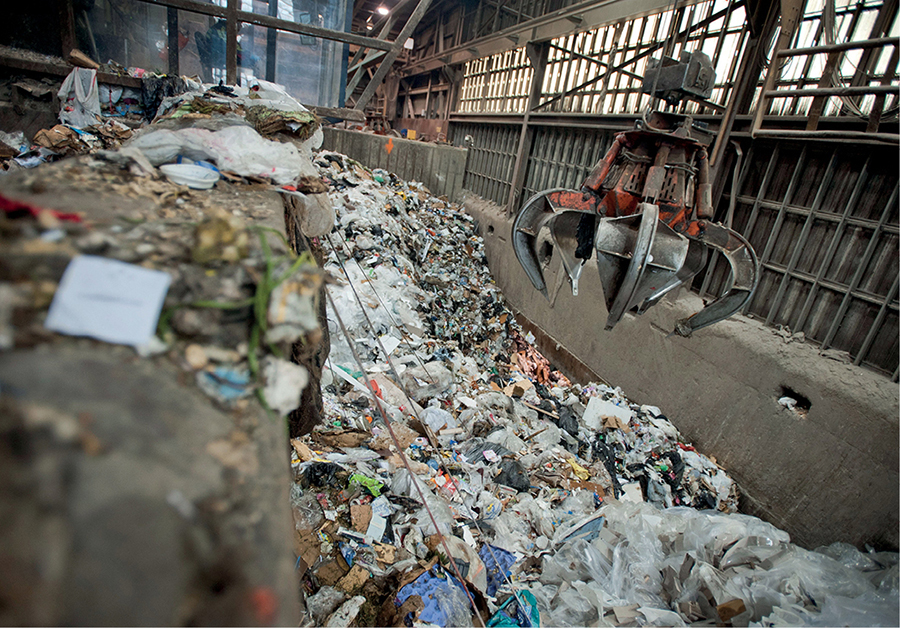To all the students throughout the world working to stop mountains of junk from burying Planet Earth and searching for creative solutions to the garbage crisis. And lets not forget the dedicated scientists, biologists, environmentalists, garbologists, and just plain folks working every day to solve the trash problem.
Text copyright 2018 by Stuart A. Kallen
All rights reserved. International copyright secured. No part of this book may be reproduced, stored in a retrieval system, or transmitted in any form or by any meanselectronic, mechanical, photocopying, recording, or otherwisewithout the prior written permission of Lerner Publishing Group, Inc., except for the inclusion of brief quotations in an acknowledged review.
Twenty-First Century Books
A division of Lerner Publishing Group, Inc.
241 First Avenue North
Minneapolis, MN 55401 USA
For reading levels and more information, look up this title at www.lernerbooks.com.
Main body text set in Adobe Garamond Pro 11/15.
Typeface provided by Adobe Systems.
Library of Congress Cataloging-in-Publication Data
Names: Kallen, Stuart A., 1955 author.
Title: Trashing the planet : examining our global garbage glut / Stuart A. Kallen.
Description: Minneapolis : Twenty-First Century Books, [2017] | Includes bibliographical references and index.
Identifiers: LCCN 2016033032 (print) | LCCN 2016033466 (ebook) | ISBN 9781512413144 (lb : alk. paper) | ISBN 9781512448665 (eb pdf)
Subjects: LCSH: Refuse and refuse disposalJuvenile literature.
Classification: LCC TD792 .K346 2017 (print) | LCC TD792 (ebook) | DDC 363.72/85dc23
LC record available at https://lccn.loc.gov/2016033032
Manufactured in the United States of America
1-39767-21311-12/13/2016
9781512467956 mobi
9781512467963 ePub
9781512467970 ePub
Contents
Chapter 1
From Rags and Bones to Plastic Disaster
Chapter 2
The United States of Trash
Chapter 3
Toxins in Our Trash
Chapter 4
Take Control of Your Plate
Chapter 5
A Graveyard of Global Waste
Chapter 6
Oceans of Plastic
Chapter 7
Space Junk
Chapter 1
From Rags and Bones to Plastic Disaster
O n September 15, 2015, a mega-storm dumped a record-breaking 2.4 inches (6 centimeters) of rain on drought-stricken Los Angeles in just one day. In Southern California, the first big storm of the fall usually comes after a summer of little rainfall and brings what locals call the first flush. Like the flushing of a giant toilet, the rainwater courses through LAs urban storm sewers and flood control channels, picking up tons of garbage along the way. The rainwater carries the trash into rivers, which flow into the Pacific Ocean. Most of the trash is plastic: single-use water bottles, shopping bags, toys, athletic shoes, car parts, electronic devices, beer and soda coolers, and countless other plastic-based consumer goods.
Heavy rains each fall carry trash from the streets and sewers of Los Angeles into rivers and then into the Pacific Ocean. Discarded plastic, Styrofoam, and other debris end up on beaches and bob in waters offshore.
The first flush of 2015 attracted a handful of trash pickers to Seal Beach, south of Los Angeles, where the San Gabriel River flows into the Pacific Ocean. The pickers searched for items they could sell at swap meets or garage sales. Katie Allen is the director of Algalita Marine Research and Education, which studies the impact of plastic pollution on beaches and oceans. She visited Seal Beach after the 2015 first flush and talked to the trash pickers. Allen remarked, Although their relationship with the first flush is purely business, every single picker I interviewed... was profoundly disheartened by the mess. She continued, Much of the debris was completely worthless, and [most of it] remained on the beach.
The City of Los Angeles works to prevent garbage from washing into the ocean during the first flush. City workers clean storm drains before seasonal rains begin in the fall. Consumers recycle plastic on trash pickup days. Yet garbage still piles up. After the 2015 first flush, many sandy California beachesglorified in rock songs, books, and moviesturned into trash dumps. And the garbage is more than an eyesore. Over time, ocean waves will carry the trash into the Pacific Ocean. There, sunlight, rain, and waves will break it up into small pieces. As the plastic and other synthetic (human-made) materials decompose, some of them will release poisonous chemicals into the air and water.
Trashy Terms
In general, the term garbage refers to our weekly household refuse (including food waste, food containers, and wastepaper). The term trash usually refers to junk materials such as old furniture and unwanted household items. In this book, we use the two terms interchangeably, along with terms such as junk , refuse , and debris .
The scene at Seal Beach after the first flush is a microcosm of the worldwide garbage crisis. Cities across the United States and nearly every other country on Earth have similar garbage problems. Every day, manufacturers create countless products to sell to millions of consumers. And just about everything comes packaged inside and secured with instant trash: cardboard boxes, plastic boxes, plastic and Styrofoam wrappers, plastic bottles, plastic sheeting, rubber bands, twist ties, and more. Consumers toss most containers and wrappers into the trash. Even the products themselves often end up in the trash. When toys and electric appliances break, many people simply toss them and buy new ones. Its easy and cheap to do so. On a global scale, humans create around 2.6 trillion pounds (1.2 trillion kilograms) of garbage a year.
In the face of the garbage crisis, the United States, other wealthy nations, and local governments around the world are trying to contain the accumulation of trash. Many cities run recycling programs, collecting plastic, glass, and metal containers; old newspapers, magazines, and scrap paper; and cardboard. The cities sell recycled materials to businesses that turn them into new containers, fresh sheets of paper, and even products such as park benches. Even so, Americans recycle only about 30 percent of their trash every year.
In the United States, trash put out for curbside pickup rather than recycling usually goes to landfills or incinerators, where the trash is either buried under layers of soil or burned. However, the rotting garbage in landfills frequently leaks toxic liquids that can seep into and poison groundwater. Garbage-burning incinerators release toxic gases through their smokestacks, polluting the air we breathe. In many poor nations, cities have no curbside trash or recycling programs at all. There, people simply pile garbage onto gigantic heaps outside, burn it, or dump it into local rivers.
Many US cities dispose of garbage by burning it in big incinerators. At this incinerator in Harrisburg, Pennsylvania, a mechanical claw grabs garbage and moves it to a furnace.
Ancient Trash Heaps
The global garbage glut is a relatively new problem. For thousands of years, everything humans produced came from the natural world around them.

